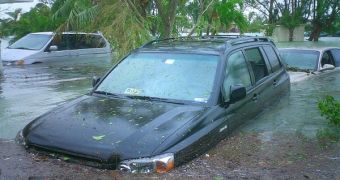Over the past few years, the United Nations constantly released numerous reports regarding the danger coastal cities are in, on account of rising global temperatures, which significantly increase the risk of flooding in Low Elevation Coastal Zones (LECZ). These areas house some 634 million people, which is about 10 percent of the world's entire 6 billion population. All these people live at an altitude of no more than 10 meters (30 feet) above sea levels, which places them in imminent danger.
The situation is very real, though some still argue on whether global warming actually exists. Over the past two decades, severe and repeated floods have prompted authorities in countries like Bangladesh to take action against the ever-increasing effects of climate change. As a result, the capital-city of Dhaka now employs buses that run on compressed natural gases (CNG), which are a more environmentally-friendly alternative to petroleum. Commuters in the city use rickshaws, taxis and public transportation to get around, instead of polluting personal automobiles.
The case of Dhaka is very fortunate, as authorities already have several protective measures set in place, especially in highly-populated areas of the city. Embankments, reinforced concrete walls, capable of holding back millions of gallons of water, and pumping stations are all to be used in the event that a flood hits the 13 million inhabitants of the city. But, unfortunately, this level of preparation is not present in all of the 3,000 cities that the latest State of the World's Cities 2008/09 U.N. report identified as being at an increased flooding risk.
The only way to prevent such catastrophes from occurring is to eliminate the core of the problem, which is temperature rise. Global warming causes more and more glaciers and ice shelves to melt or to disintegrate, which, in turn, increases the sea levels worldwide. This causes anomalies in the make-up of tropical storms and also triggers hotter heat waves that repeat annually.
Environmentalists urge nations to reduce their carbon emission outputs to the 2000 level by 2050. This is an ambitious goal, but it’s the only way for nations to prevent a catastrophic 2 degrees Celsius increase in temperature, which will lead to most animal species going extinct. Such an effect will be irreversible and all international efforts are aimed at averting such a possibility.

 14 DAY TRIAL //
14 DAY TRIAL //